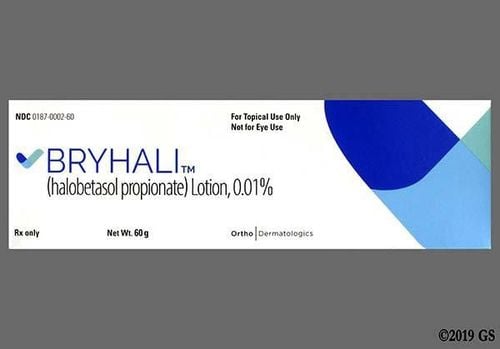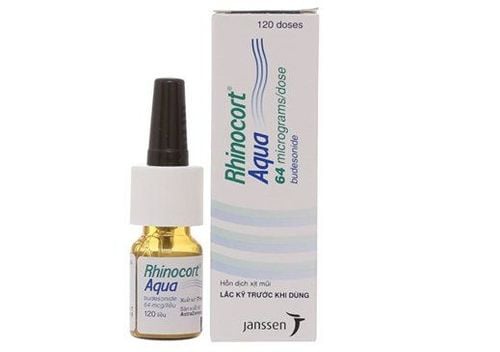This is an automatically translated article.
Stadgentri is formulated in the form of a topical cream, with the active ingredients being Betamethasone, Gentamicin and Clotrimazol. It is used in the treatment of corticosteroid-responsive skin diseases in the presence of bacterial and fungal infections.
1. Uses of Stadgentri
Stadgentri contains 100mg of Clotrimazole and 6.4mg of Betamethasone dipropionate. What does Stadgentri do? Stadgentri is a topical cream that combines the anti-inflammatory and antipruritic properties of betamethasone with the antifungal activity of clotrimazol and the broad-spectrum antibacterial activity of Gentamicin sulfate.Of which, Betamethasone dipropionate is a fluorinated synthetic corticosteroid. At therapeutic doses, this ingredient has anti-inflammatory, immunosuppressive, and anti-inflammatory effects thanks to its anti-inflammatory, antipruritic and vasoconstrictor effects. Gentamicin sulfate is an aminoglycoside antibiotic with bactericidal effect due to its ability to inhibit bacterial protein synthesis. Clotrimazol is a broad-spectrum antifungal agent that acts by binding to phospholipids in the fungal cell membrane to alter membrane permeability, causing loss of essential intracellular substances, leading to fungal cell destruction.
Stadgentri topical is indicated for use in the following cases:
Treatment of corticosteroid-responsive skin diseases when complicated by bacterial and fungal infections or when these infections are suspected; Treatment of exudative eczema. Contraindications to using Stadgentri: People who are sensitive to Betamethasone dipropionate, Clotrimazole, Gentamicin or Aminoglycosides, Corticosteroids or other Imidazol...
2. Usage and dosage of Stadgentri
How to use: Stadgentri is for external use only. First, the patient cleans and dries the area to be treated, then takes a corresponding amount of the drug and applies it to the damaged skin. Next, the patient gently rubs the surface of the skin for a few minutes to allow the drug to penetrate, and washes hands after contact with the drug (unless the hands are the area to be treated). Patients should avoid occlusive dressings (unless directed by the physician) as this may increase drug absorption, leading to systemic reactions. Patients should also avoid contact with other areas of skin where Stadgentri has been applied because Stadgentri can damage healthy skin cells.
Dosage: Apply a thin layer of cream to the affected area twice a day, morning and evening. To ensure effective treatment, patients should apply the drug regularly. The duration of drug use is prescribed by the doctor depending on the area, the location of the diseased skin, the patient's response,...
Overdose: Excessive or prolonged use of topical corticosteroids can cause inhibition It inhibits pituitary-adrenal function and leads to secondary adrenal insufficiency, causing manifestations of adrenal hypersecretion, including Cushing's disease. With the use of topical clotrimazole, there is almost no overdose. If a single overdose of Gentamicin is used, there are almost no symptoms. Excessive or prolonged use of topical gentamicin may cause further lesions (due to the growth of non-susceptible organisms). When Stadgentri overdose, the patient is prescribed appropriate symptomatic treatment.
Missed dose: The user should add the dose of Stadgentri as soon as he remembers. If the interval is close to the next dose, skip the missed dose and take Stadgentri on schedule as scheduled. You can set an alarm to remind you of the time to take your medicine, avoiding the risk of forgetting a dose.
3. Side effects of Stadgentri When using Stadgentri, patients may experience some side effects such as: Hot, itchy, skin irritation, abnormal hair growth, dry skin, folliculitis, rash. acneic urticaria, cyclic dermatitis, hypopigmentation, allergic contact dermatitis, peeling, skin atrophy, secondary skin infections, stretch marks and heat rash, irritation and minor burns.
When experiencing the above symptoms, the patient should stop taking Stadgentri and notify the doctor or go to the nearest hospital for timely examination and treatment.
4. Precautions when using Stadgentri Some notes users need to remember before and while taking Stadgentri:
Stadgentri cream is for external use only. Avoid contact of the drug with eyes, mouth or vagina; Do not use the drug for patients under 17 years old, people with dermatitis caused by diaper rash and bandages; Systemic absorption of topical corticosteroids may cause reversible suppression of the hypothalamic-pituitary-adrenal (HPA) axis, manifestations of Cushing's syndrome, hyperglycemia, and diabetes in some patients. Factors that increase systemic absorption include: Widespread application of the drug, prolonged use of the drug, and use of occlusive dressings. Patients with extensive application of the drug or covered areas of skin should be periodically tested for HPA axis suppression. If this occurs, the drug should be discontinued, the frequency of use reduced, or a less potent corticosteroid substituted; The use of Gentamicin may increase the degree of susceptibility of microorganisms (including fungi). If superinfection occurs during the use of gentamicin, the drug should be discontinued and other appropriate therapy instituted; There are cases of cross-reactivity between aminoglycoside antibiotics; If systemic aminoglycoside treatment is combined with topical application of Gentamicin on large areas of damaged or intact skin, toxicity may accumulate; Never share Stadgentri with anyone, even if they have similar symptoms to your condition. The use of drugs in any case must be prescribed by a doctor; Stadgentri should not be used in pregnant and lactating women, unless directed by a doctor.
5. Stadgentri drug interactions
When Stadgentri is used concurrently with other drugs, drug interactions may occur. Drug interactions can change the action of the drug (affect the effectiveness of treatment) or cause many dangerous reactions.
Drugs that can easily interact with Stadgentri drugs include: Sulfafurazol, Acetylcysteine, Chloramphenicol, Actinomycin, Heparin, Sulfacetamide, Clindamycin, Doxorubicin. Therefore, patients should inform their doctor about the medications they are taking to receive appropriate advice. Stadgentri is commonly used in the treatment of corticosteroid-responsive dermatitis or atopic skin disease. When taking the drug, the patient should strictly follow the doctor's instructions to limit the risks during treatment.
Please dial HOTLINE for more information or register for an appointment HERE. Download MyVinmec app to make appointments faster and to manage your bookings easily.













